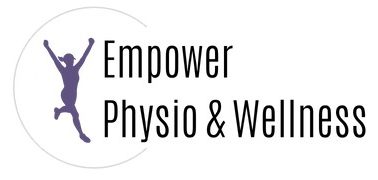You’re coasting along living life, regularly getting your sweat on at boot camp and spin class, and then one day out of nowhere it hits you. It’s been a while since you last felt it….you thought you were OVER that pain. But here it is—coming back to say hello. You didn’t even do anything differently to make this happen and now you’re wondering how to reduce pain and discomfort in your body…NOW!
Whether it’s an old injury or one that’s a bit different this time around, you know that feeling when your back, hip, or knee hurts…and not the good kind of hurt. It’s easy to get caught up in your thoughts.
“Did I really mess something up this time?”
“Am I getting too old to run this much?”
“Will I do more damage if I push through it?”
“Is this the A-word coming on like it did to my mom…..arthritis?!”
“Am I going to gain all the weight back and be right back to where I started?”
It’s amazing what your mind can trick you into believing and before you know it, you’ve convinced yourself that life as you knew it is over. Let’s back up and give your brain a rest. Here’s how to reduce pain and discomfort.
Keep moving! Motion is lotion and our muscles, joints, and tendons crave movement. If you feel pain or injury coming on, gentle movement is one of the best things you can do for yourself, but you’ll probably have to dial it back a little. Rather than running, try a walk. If you typically jump around and do a lot of high-impact exercises, scale it back to low impact.
Keep in mind, injuries can vary in severity level. If you’ve experienced a traumatic injury, have a stress fracture, cannot put weight on a joint, or have significant swelling or bruising, these are signs that you need to seek medical attention.
Just breathe. Breathing is the quickest and easiest way to help your body relax. Deep, slow, belly breathing literally changes how your nervous system works, calms the mind drama, and promotes healing. Crazy cool, right?
Optimal breathing also helps activate core muscles that support your spine and pelvis, reducing pain and increasing stability. Here’s how to breathe properly:
- Find a comfortable position either laying on your back with your knees bent up and your feet flat on the floor, or laying on your side with a pillow between your knees.
- Exhale all your air through an open mouth until there is nothing left. You should feel the muscles on the sides of your abdomen turn on (hello obliques).
- Keep some tension in your abdomen and inhale through your nose all the way until there’s literally no more room for another air particle in your lungs.
- Exhale gently through an open mouth and repeat this for 3 sets of 5 breaths about 1-3 times a day.
Mobilize. If a body part is tight, painful, or injured, chances are there’s tightness in the muscles and joints surrounding it. Take for example your low back. If it’s sore, your mid-back and/or hips are probably a little tight. Giving your body extra mobility frees up movement and can take strain off the injured area.
Try a yoga flow or some mobility exercises to ease the pain and move easier. Remember, mobility drills should feel GOOD! Don’t push through that ouchy, unproductive pain. Two of my favorite mobility exercises are this one and this one. Prefer yoga? Check out my faves from Sarah Beth and Travis Eliot. All of these take 10 minutes or less to do.
Go back to the basics. Regardless of your fitness level, everyone benefits from going back to the basics with things like core and glute activation exercises. When we keep pushing ourselves to advance to the next level, it can be easy to sacrifice form.
One of my favorite, basic exercises is called a bird dog. It’s great for getting your glutes, core, back and shoulder blade muscles activated. Check out how to try it here.
Call on your expert team. Tried everything in this blog post and still can’t seem to shake the pain? It’s time to contact your favorite healthcare providers to help you feel great. It’s okay to seek help from professionals— it’s our job to figure out what’s going on and help you fix it.
Most of the time when pain or injury creeps up, it’s because of a movement problem. Your body is compensating somehow to help you live life in the easiest and least painful way possible. This happens without you even realizing it. The compensation becomes too much for your body to handle and it throws up the SOS flag. Working with a movement expert allows you to recognize these habits and fix the real underlying problem.
At Empower Physio and Wellness, we have a three-step process to help you feel and move better.
- First, we calm your pain down. No one likes to be in pain, so let’s kick that first. Plus, your body will always move differently in the presence of pain so that’s the first thing we need to address.
- Next, we teach your body to move in the most ideal way. This is called movement retraining and is often overlooked as part of the recovery process. You HAVE to make a new movement pattern, otherwise old pain and injury tends to come back.
- Lastly, we lock in great movement patterns with strengthening exercises. Our bodies crave strength and stability to be the best version of ourselves.
So there you have it! The 5 things you need to reduce pain and discomfort. Have questions or need to get in touch? Contact us to see how we can help you feel your best.



